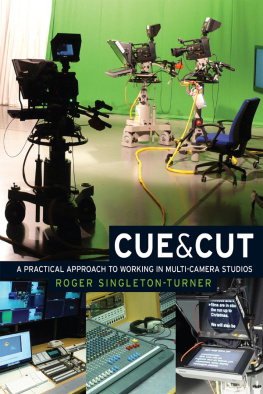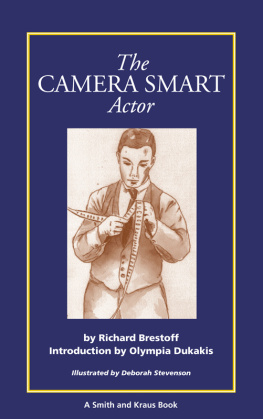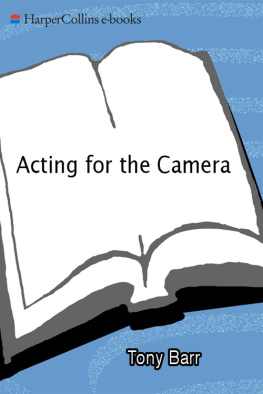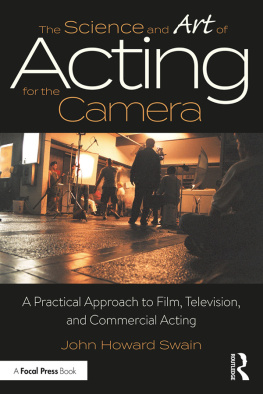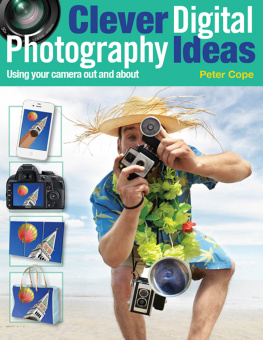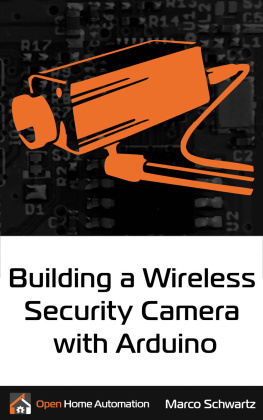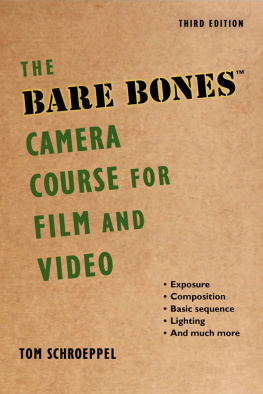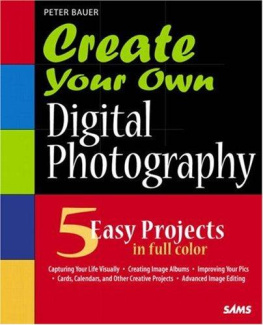CUE &
CUT

CUE &
CUT
A practical approach to working in multi-camera studios
Roger Singleton-Turner
Manchester University Press
Manchester
Copyright Roger Singleton-Turner 2011
The right of Roger Singleton-Turner to be identified as the author of this work has been asserted by him in accordance with the Copyright, Designs and Patents Act 1988.
Published by Manchester University Press
Altrincham Street, Manchester Ml 7JA, UK
www.manchesteruniversitypress.co.uk
British Library Cataloguing-in-Publication Data
A catalogue record for this book is available from the British Library
Library of Congress Cataloging-in-Publication Data applied for
ISBN 978 0 7190 8448 5 hardback
ISBN 978 0 7190 8449 2 paperback
The publisher has no responsibility for the persistence or accuracy of URLs for any external or third-party internet websites referred to in this book, and does not guarantee that any content on such websites is, or will remain, accurate or appropriate.
Contents
Unless otherwise indicated, photographs were taken by the author in the TV Studio at the University of Sunderland. Except for .
Plates
.
.
.
.
.
.
.
.
.
.
.
.
.
.
.
.
.
.
.
.
.
16B The blue LED lights around the camera lens.
Both images by courtesy of BBC Research and Development.
.
.
19A The Surround-Sound Decca Tree microphone array, developed by Ron Streicher. Courtesy of Ron Streicher (for details, see text and URLs: stereosoundbook and Wes Dooley). The Surround-Sound Decca Tree microphone assembly, reproduced from the article The Decca Tree Its Not Just for Stereo Anymore by Ron Streicher, published by Audio Engineering Associates: www.ribbonmics.com/pdf/Surround_Sound_Decca_Tree-urtext.pdf.
For a more complete description of this array and a history of the Decca Tree, refer to The New Stereo Soundbook, Third Edition by Ron Streicher and F. Alton Everest, www.stereosoundbook.com.
.
.
.
Figures
.
.
.
.
1.3C Operation of tilt mechanism.
All three pictures by kind permission of J.L. Fisher Inc.
.
.
.
.
.
.
.
.
.
.
.
.
.
.
.
.
.
.
.
.
.
.
.
.
5.4B Autocue Operator with handset.
The plans featured in figures 6.1 to 6.5 were designed by Alex Clarke for the Carlton Television series Welcome to orty-Fou for CITV, written by Jean Buchanan, produced and directed by Roger Singleton-Turner. They are reproduced by courtesy of ITV.
.
.
.
.
.
.
.
.
.
.
.
.
.
.
.
.
.
.
.
.
.
.
.
.
.
.
.
.
.
.
.
.
.
.
.
.
.
.
.
.
.
.
.
.
.
.
.
.
.
.
.
.
.
.
.
.
.
.
.
.
This book stems, on the one hand, from my experience of working in British Television for forty years at various levels ending as a ProducerDirector and beginning as a clerk (in Graphics, Visual or Special Effects, Design and so on) and progressing through studio floor jobs. I have also worked in different capacities on film productions and outside broadcasts. On the other hand, the content of the book is based on my experience of teaching trainee Directors in Great Britain for the BBC and, since 1998, students on University, HND and other media courses at various establishments in the UK (and Thailand). As a Director and Producer Director, I spent most of my time working on Childrens Drama, including Jackanory, Grange Hill and The Demon Headmaster.
I have tried to cover as much ground as possible in television production. The material is derived from my own observations, experiences and practice taught or passed on orally. Specific primary sources are credited, but a great deal is based on dozens of conversations with many people television professionals over the years. Secondary sources are credited in the usual way. The information about design, cameras, sound, lighting and so on is built on what students of production need as a minimum. There are full-length books and courses for those needing more.
For this reprint, Manchester University Press has enabled me to correct the three factual errors of which I am aware and to comment on some of the changes since 2011 in the Industry, particularly in British Television. These include the following.
The sale of BBC Television Centre, which is alluded to throughout the book, and the move of a great deal of production to Salford. The Corporation will retain the use of three of TV Centres refurbished studios including TC 1 () and TC3, the first studio to be completed there in 1960.
3D television has not taken off as I thought it might, perhaps because the most accessible systems currently need special glasses.
Updating : Ultra HD formats seem to be settling down. 2K HDTV is a format that seems to have had limited application for cinema projection purposes. It allowed full HD vertical resolution and a little more width than 16:9 video, better for widescreen film formats.
4K UHDTV is good for cinematic releases and other large screens, giving 8.3 megapixels over 2160 lines. (Standard HD delivers about 2.1 megapixels on 1080 lines.) 4K kit is planned for the refurbished BBC TV Centre Studios and is now commercially available for home use. Appropriate cameras and edit facilities are becoming available in UK teaching institutions.
8K UHDTV rivals IMAX films and can deliver 33.2 megapixels per frame of picture information.
Budgets are still being squeezed. Multitasking seems to be increasingly common, so role titles will vary more and more. The actual tasks described in the text, though, still need to be performed if a TV studio is to function efficiently. One consequence of the squeeze is that building a career in the UK is likely to remain a challenge.
There have been changes in the politics of television and the relationship between Politics and television broadcasters. These relationships will continue to evolve, requiring responsibility, tolerance and understanding.
The process labelled dumbing down of content seems to continue. For example, some programmes give too much time to trailing what the viewer will see or to recapping what the viewer has already seen. There is also a tendency to break stories up into bite-sized chunks and intersperse them through other content. Such practice is not treating the adult viewer with respect and would certainly be frowned on by my former colleagues in Childrens Programmes.
Streaming material to portable devices has caught on and is on the increase.
Though any of these changes might affect content and how it is delivered as well as what an individual might be expected to do in a studio, none of them actually affect what a multi-camera television studio

